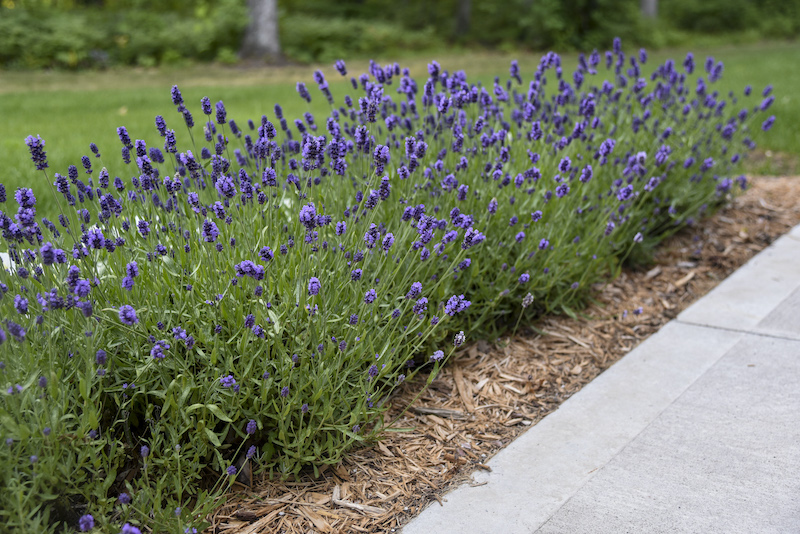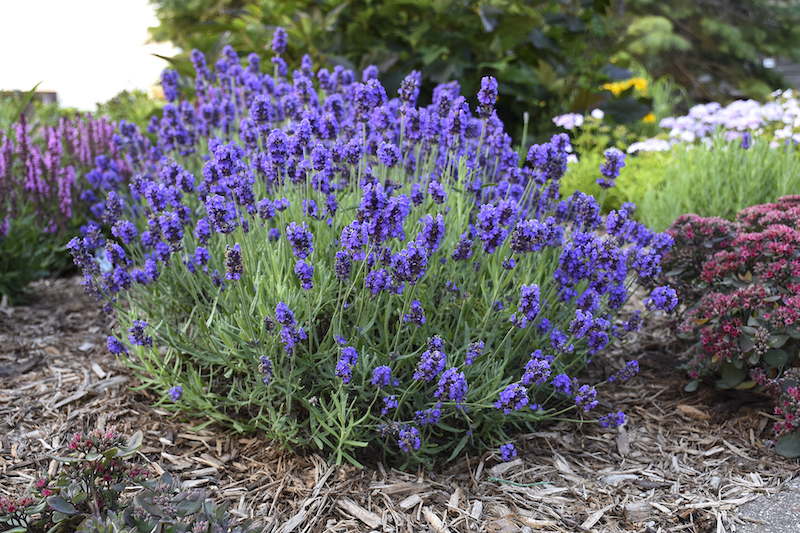Lucky for gardeners, deer populations generally find lavender plants unpalatable. Deer are repelled by lavender's strong fragrance and taste so they steer clear of this beautiful and fragrant plant.

According to Rutgers University, this plant is Rarely Damaged on their rating scale from Rarely Damaged to Frequently Severely Damaged. However, if deer are hungry enough when food is scarce, they will be less selective.
| Rarely Damaged |
| Seldom Severely Damaged |
| Occasionally Severely Damaged |
| Frequently Severely Damaged |
Keeping Deer Away From Lavender
Planting lavender along with other highly fragrant and sharp-tasting herbs, such as Russian sage and rosemary, will help keep meandering deer away.
There are plenty of store-bought deer repellent products and homemade recipes that can be found online that do a good job of deterring deer from nibbling. Deer have a highly developed sense of smell, so once you apply the repellent, deer are able to detect the odor for weeks. Fortunately, the odor is not noticeable to humans once the product has dried on the plant. It’s always good practice to rotate repellents so deer will not become accustomed to a particular taste or scent.

Will Lavender Come Back After Deer Eat Them?
If deer nibble on your lavender plant and it looks tattered, trim the foliage back by about 1/3 of the plant's overall size after blooming. This will neaten the appearance and promote better branching and growth for the following spring season.
Sources: Rutgers New Jersey Agricultural Experiment Station ‘Landscape Plants Rated by Deer Resistance’ 2018
 |
Author Chris Link - Published 01-20-2023 |
